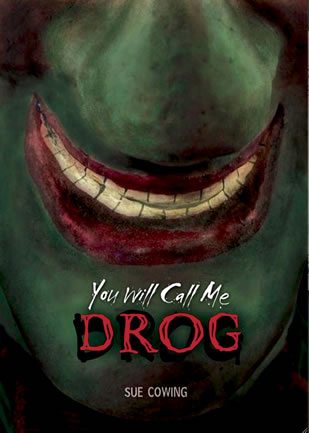How To Write Books For Children
“Sweeping the Legos off my desk, I got out a pencil and paper and pulled the puppet out of my pack. I couldn’t seem to get it to go on, so I tried it on my left hand. Perfect fit. Funny, I never thought there were leftand right-hand puppets. I cleaned the dirt off it with my T-shirt. The minute I wiped its face, it said, ‘You will call me Drog.'”
And thus it begins. The novel You will Call Me Drog is written by local author Sue Cowing, and it’s a good one. Drog, you see, cannot be removed, no matter what our young protagonist Parker does to get him off. Drog has a mind of his own. And he’s a scary, bad, funny dude. He’s the opposite of Parker, in fact, who is quiet, creative but otherwise quite ordinary. This sets up a clash of duality within a classic coming-of-age story. Parker is a good boy. Drog forces him to watch exotic dancers. Parker would never dream of upsetting his saintly mother or telling off his absent father. Drog relishes doing both in the nastiest way possible. Drog is in control, and all Parker can do is hang on and try to survive.
You will Call Me Drog by Sue Cowing
This is Cowing’s very first published middle-grade novel. Not bad for a woman who didn’t turn her attention to writing until she was in her 30s. But do not make the mistake of thinking it was easy. It took her seven years to move Drog from the germ of an idea to an actual published novel, and that, she says, is not unusual at all.
“You find out pretty quickly an apprenticeship of 10 years is not unusual.”
Cowing is co-president of the Hawaii chapter of the Society of Children’s Book Writers and Illustrators (SCBWI) and knows better than most the allure of the pen. (In this day and age, I guess that would be the allure of the computer, but it just doesn’t sound nearly as romantic.)
Cowing says it’s not unusual for people to think writing for children is easier than writing for adults.
That’s wrong. You cannot talk down to children.
“Never do that,” she says. “I have so much respect for kids this age, and I think people underestimate them.”
So how to reply to people who say, I think I can write for children?
“We get this all the time,” she says. “Just today I had someone email me.”
Cowing is honest with them. She tells them how to join SCBWI, explains about the long process, but that being part of the organization can help you make progress.
“It’s a lot of reading, talking to other people. Here in Hawaii there is no instruction. SCBWI is it. And yes, it takes discipline to write, but it also helps to read, to talk to people who can save you some time.”
Listening to critiques and reading reviews help, too. Innate talent helps, she says, but the rest of it can be learned. You have to be determined and, Cowing says, “How badly do you want it? You have to have passion.”
If you’re still interested in writing for children after hearing how hard it is, the SCBWI is holding its annual conference Saturday at Ala Moana Hotel.
One of the speakers is New York Times best-selling author/illustrator Peter Brown, who wrote the popular books Children Make Terrible Pets and the recently published You Will Be My Friend.
Cowing will be there as well, to share her insights on the business side of creativity. Because after you finally write the book, you have to market it. And that’s a whole other column.
For information on this Saturday’s conference or to sign up, go to scbwihawaii.org.






